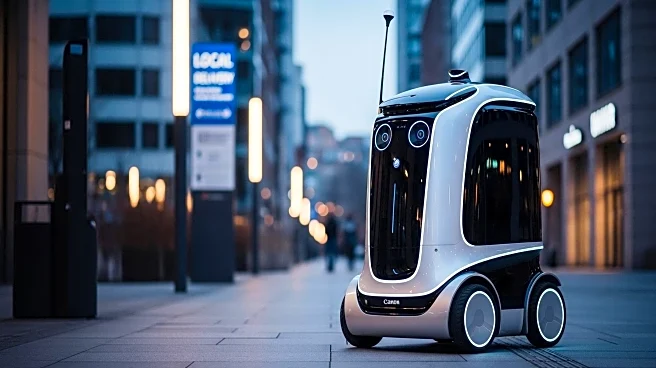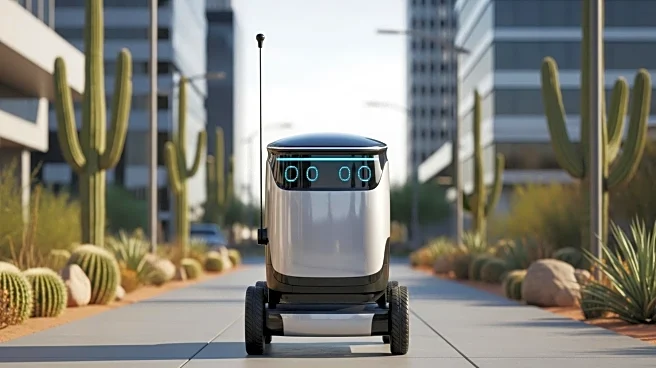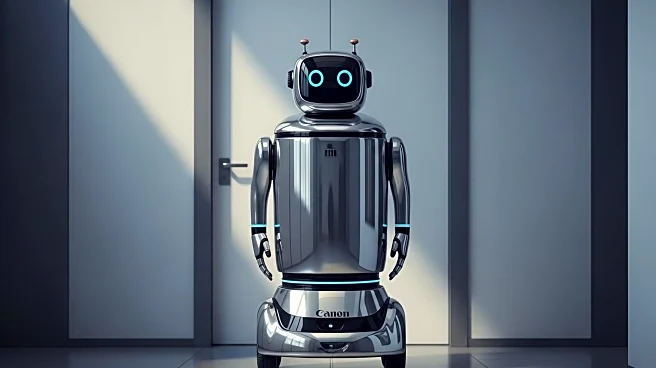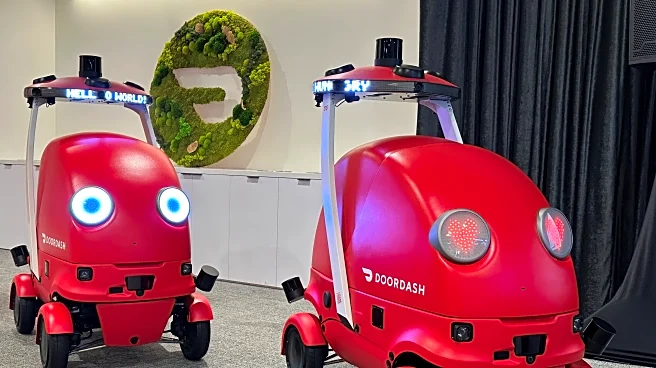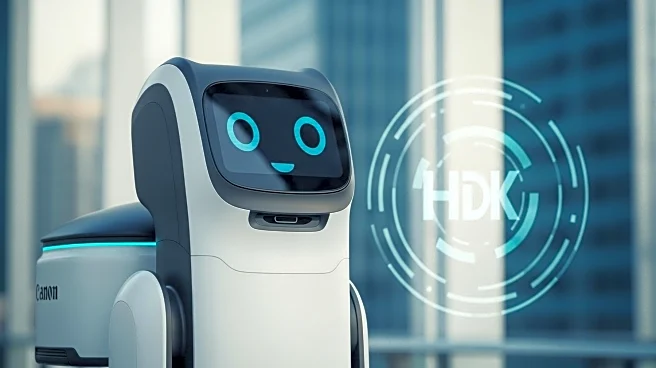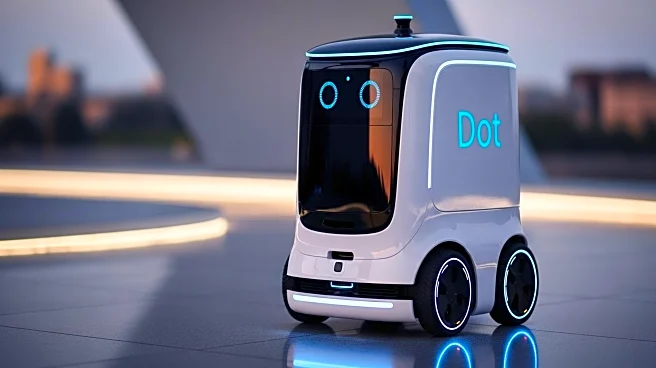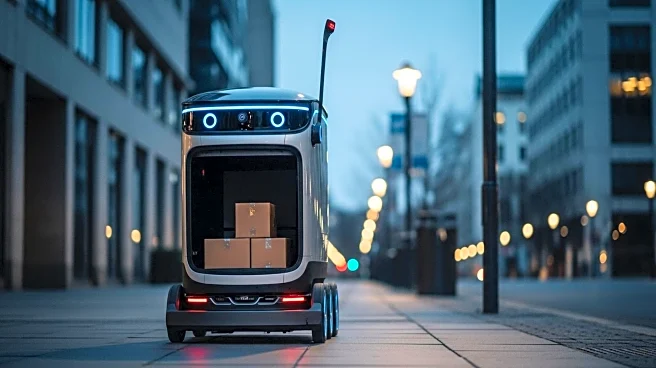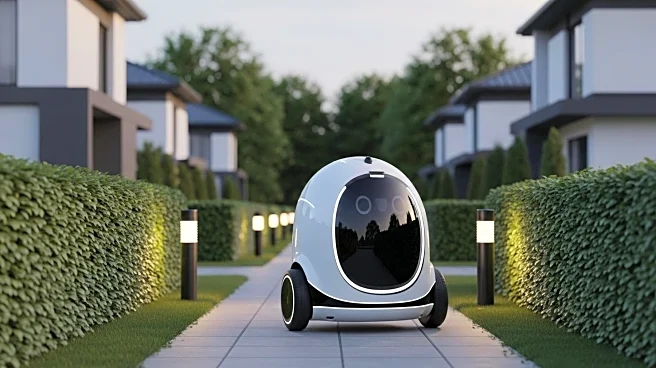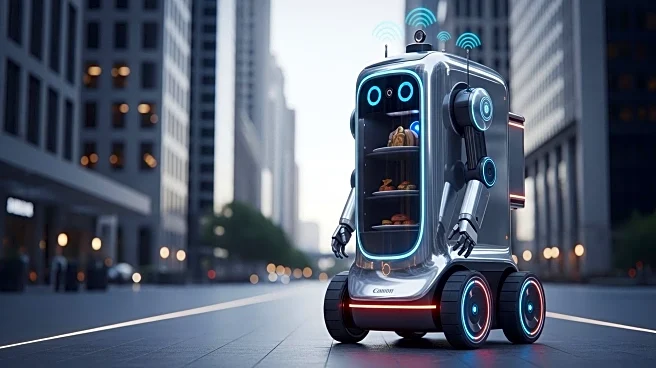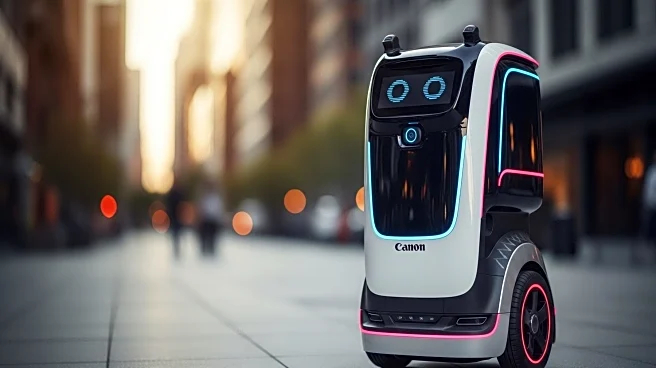What's Happening?
DoorDash has introduced Dot, its first commercial autonomous delivery robot, designed to navigate bike lanes, roads, sidewalks, and driveways for local deliveries. Dot is compact, at one-tenth the size of a car, and can travel up to 20 mph, making it suitable for neighborhood trips. The robot is engineered to reduce congestion and facilitate smooth handoffs, catering to the needs of local businesses and consumers. Stanley Tang, co-founder and head of DoorDash Labs, emphasized Dot's reliability and efficiency in serving millions of deliveries daily. The robot is equipped with a perception stack that includes cameras and lidar sensors for situational awareness, and it can carry up to 30 pounds of cargo. Dot's initial deployment will be in Tempe and Mesa, Arizona, as part of DoorDash's early-access program, with plans for expansion into multiple markets.
Why It's Important?
The introduction of Dot represents a significant advancement in autonomous delivery technology, potentially transforming the logistics and delivery industry. By reducing reliance on full-sized vehicles for small deliveries, Dot could decrease traffic congestion and improve delivery efficiency. This innovation aligns with growing consumer demand for faster and more reliable delivery services. For DoorDash, Dot enhances its delivery platform, offering a competitive edge in the market. The robot's ability to navigate complex environments autonomously could set a new standard for delivery robots, impacting other companies in the sector. Businesses and consumers stand to benefit from improved delivery times and reduced environmental impact due to Dot's electric design.
What's Next?
DoorDash plans to expand Dot's deployment beyond Arizona, potentially reaching multiple markets. The company is building an autonomous delivery platform to optimize delivery methods, deciding between human dashers, drones, sidewalk robots, or Dot. As Dot undergoes real-world testing, DoorDash will continue refining its technology stack, focusing on safety and efficiency. The company aims to replace expensive lidar sensors with automotive-grade alternatives to enable rapid commercial scaling. Stakeholders, including local businesses and consumers, may anticipate enhanced delivery services and operational efficiencies as Dot becomes more widely adopted.
Beyond the Headlines
Dot's development highlights ethical and logistical considerations in autonomous delivery technology. The robot's ability to navigate diverse environments autonomously raises questions about safety and interaction with pedestrians and other road users. DoorDash's approach to training Dot with deep learning and behavior cloning reflects a commitment to improving AI systems through real-world experience. As autonomous delivery robots become more prevalent, regulatory frameworks may need to evolve to address safety standards and operational guidelines. The cultural shift towards accepting robots in everyday life could influence public perception and acceptance of autonomous technologies.

